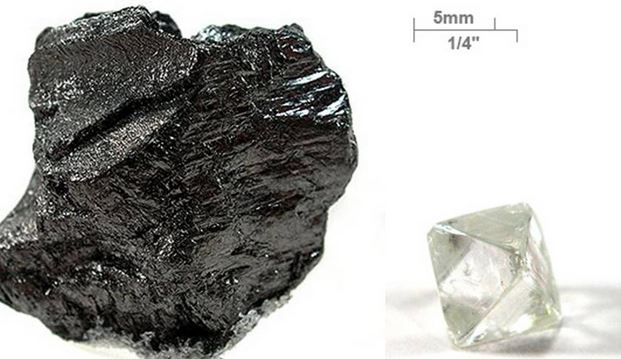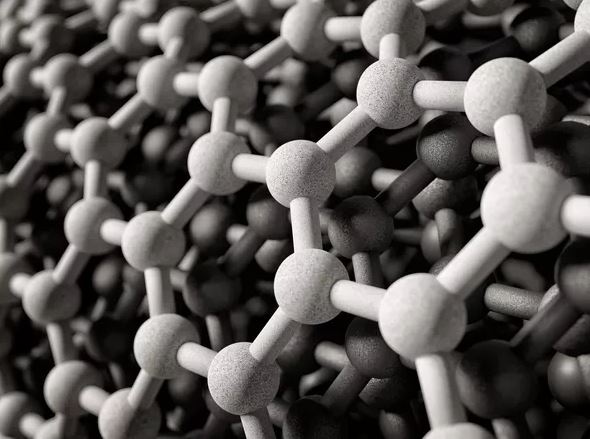Introduction to Carbonnen carbons
Carbonnen carbons is making waves in various industries, captivating the attention of scientists, environmentalists, and consumers alike. But what exactly is Carbonnen? If you think it’s just another buzzword in the realm of materials science or sustainability, think again. This unique compound holds a wealth of potential that goes beyond its basic definition. In this comprehensive guide, we’ll explore its distinct features, uses, and how it can make a significant impact on our daily lives.
Join us as we delve into the fascinating world of Carbonnen—uncovering not only its chemical makeup but also the myriad benefits it offers to both individuals and businesses. Whether you’re curious about how to integrate it into your life or eager to learn why it’s being hailed as an eco-friendly marvel, you’ve come to the right place!
The Difference Between Carbonnen and Carbon
Carbonnen carbons and carbon may sound similar, but they are distinct materials with unique properties. Carbon is a important element found in many forms, such as graphite and rhombus. Its versatility makes it essential for life and numerous industrial applications.
On the other hand, carbonnen refers to a specific composite or derivative that incorporates carbon along with other elements or compounds. This engineered material often exhibits enhanced characteristics compared to pure carbon.
The vital changes lie in their construction and functionality. While elemental carbon serves as a building block for organic molecules, carbonnen is designed for specialized uses. It can offer improved strength, flexibility, or heat resistance depending on its formulation.
Understanding these distinctions helps clarify why each has its place in science and industry.
The Chemical Composition of Carbonnen carbons
Carbonnen is a fascinating compound, primarily composed of carbon atoms arranged in unique structures. This configuration allows it to exhibit distinct properties compared to traditional carbon materials.
Its molecular formula often varies based on its specific form and application. Generally, Carbonnen carbons consists of carbon chains or rings that can incorporate various functional groups, enhancing its versatility.
The presence of these functional groups contributes significantly to Carbonnen’s reactivity and interaction with other substances. As a result, it serves as an essential building block in numerous chemical processes.
By manipulating the arrangement and types of bonds within Carbonnen molecules, scientists can tailor its behavior for specific uses in industries ranging from energy production to pharmaceuticals. Each modification unlocks new potential applications and benefits that are still being explored today.
Common Uses of Carbonnen carbons
Carbonnen is making waves across various industries due to its versatility. One prominent use is in renewable energy solutions. It acts as a crucial component in the development of batteries and fuel cells, enhancing efficiency.
In agriculture, Carbonnen carbons finds its place as a soil amendment. It helps improve soil health, promoting better crop yields without harmful chemicals. This natural approach supports sustainable farming practices.
Additionally, Carbonnen carbons plays a vital role in construction materials. Its unique properties allow for stronger yet lighter building components that contribute to greener infrastructure.
The technology sector also benefits from Carbonnen’s applications. It enhances electronic devices by improving conductivity while reducing weight and size.
From everyday items to advanced technologies, Carbonnen’s adaptability shines brightly across multiple fields.

Environmental Benefits of Using Carbonnen carbons
Carbonnen carbons offers a multitude of environmental benefits that make it an attractive alternative to traditional materials. Its unique properties enable improved energy efficiency in various applications, reducing overall carbon emissions.
By utilizing Carbonnen, industries can significantly lower their reliance on fossil fuels. This shift contributes to cleaner air and less pollution in urban areas, enhancing public health.
Additionally, Carbonnen is often derived from renewable sources. Its production process typically requires fewer resources than conventional alternatives, promoting sustainability.
The material also has excellent durability features. Products made from Carbonnen tend to have longer lifespans, which results in reduced waste generation over time.
Moreover, using Carbonnen carbons helps conserve natural habitats by minimizing the demand for raw materials sourced from ecosystems under threat. These factors collectively highlight the positive impact of incorporating Carbonnen carbons into our daily lives and industrial practices.
Economic Benefits of Using Carbonnen carbons
Carbonnen carbons presents numerous economic advantages that can significantly impact industries. Its versatility makes it a valuable resource in various sectors, from manufacturing to agriculture.
Utilizing Carbonnen carbons can lead to cost savings by improving efficiency in production processes. This material often enhances product durability, reducing the need for frequent replacements and repairs.
Moreover, its lightweight properties contribute to lower transportation costs. Businesses can save on shipping expenses while also decreasing their carbon footprint.
Investing in Carbonnen carbons research can spur innovation and create new job opportunities within emerging markets. As industries adapt to greener practices, companies leveraging this material may gain a competitive edge.
Governments could benefit economically through incentives for companies adopting sustainable materials like Carbonnen carbons. These policies might attract investment and foster local economies as businesses seek eco-friendly solutions.
How to Incorporate Carbonnen carbons into Daily Life
Incorporating Carbonnen carbons into your daily life is easier than you might think. Start by replacing conventional materials with those made from Carbonnen carbons. Look for products like eco-friendly packaging, textiles, and even construction materials that utilize this innovative compound.
Consider your diet too. Seek out food items packaged in Carbonnen carbons based materials to reduce plastic waste.
For home improvements, choose paints or finishes containing Carbonnen components. This adds sustainability without sacrificing quality.
Additionally, educate yourself on brands that prioritize Carbonnen in their manufacturing processes. Support these companies to encourage more sustainable practices across industries.
Spread the word about the benefits of Carbonnen among friends and family. Sharing knowledge fosters community involvement and encourages collective efforts toward a greener lifestyle.
Conclusion:
Carbonnen carbons is an intriguing substance that plays a significant role in various aspects of our lives. It has distinct differences from carbon, and understanding its chemical composition opens doors to numerous applications.
This versatile material finds common use in industries ranging from construction to technology. Its environmental benefits cannot be overlooked, as it offers sustainable alternatives that help reduce pollution and carbon footprints. Economically, the adoption of Carbonnen carbons can lead to cost savings and new job opportunities in green sectors.
